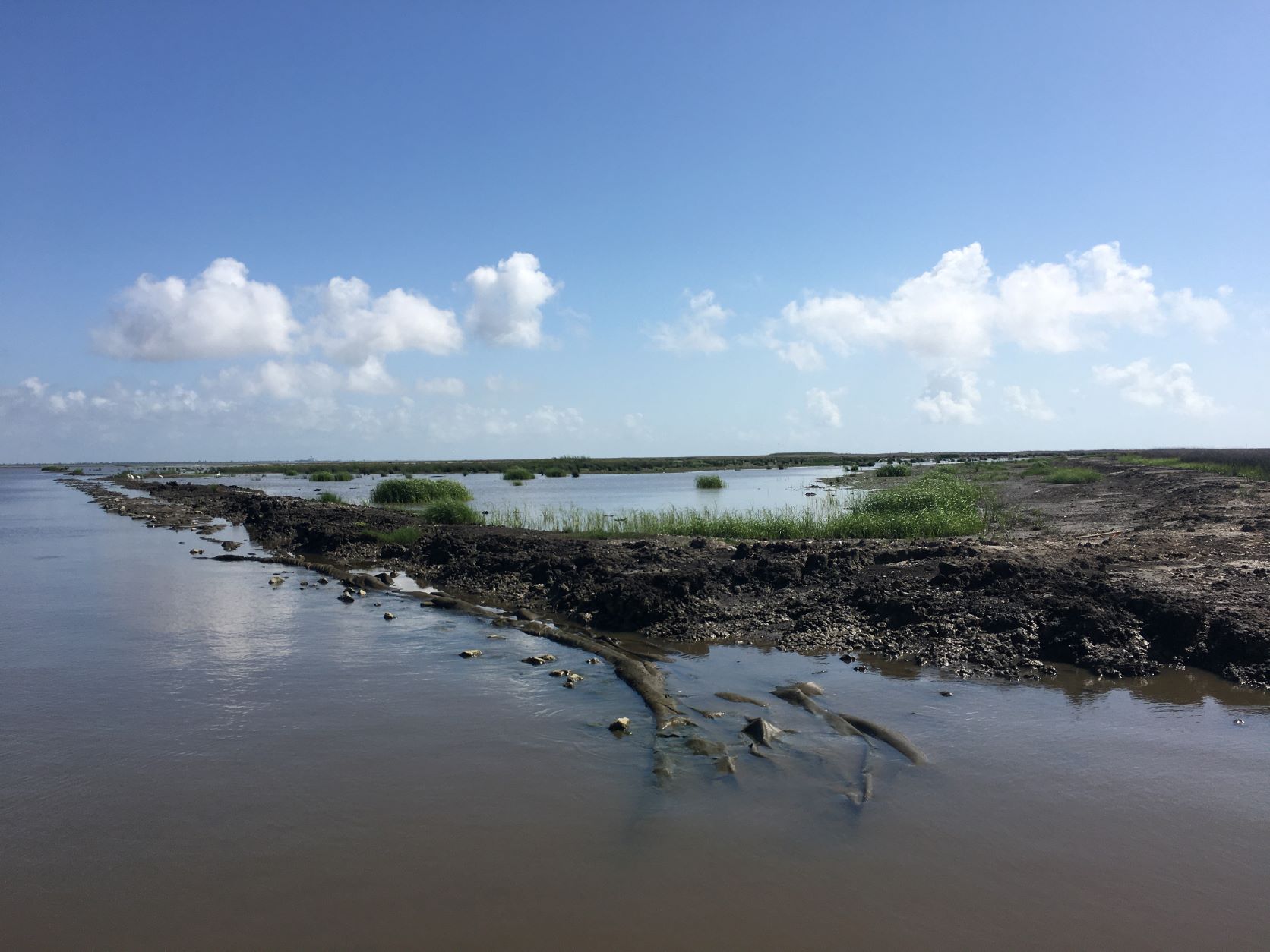Photo Caption: At the Hancock County Marsh Living Shoreline Project, MDEQ and RESTORE leadership observe the project site by looking past the dredged sediment berm to see the marsh grasses naturally colonizing.
Leaders from the Mississippi Department of Environmental Quality (MDEQ) and the RESTORE Council visited Bay St. Louis, where $6 Million in RESTORE funds is being invested in the Hancock County Marsh Living Shoreline (HCMLS) Project. This project, which builds on early investments of Natural Resource Damage Assessment (NRDA) funds, will add an additional 1.5 miles of living shoreline to the current HCMLS project, extending the existing HCMLS to the area near Bayou Caddy. This visit is part of a tour of RESTORE Council funded restoration projects across the Gulf Coast as the Council prepares to update its Comprehensive Plan for Restoring the Gulf Coast’s Ecosystem and Economy. A draft of the plan was released for public comment on April 21, 2022.
This investment of RESTORE funds will increase the acreage of marsh protected in Hancock County and enhance community resilience by mitigating further coastal marsh erosion and providing storm surge and wind/wave erosion protection for coastal ecosystems and communities. In 2013, the State of Mississippi began implementation of the HCMLS project through $50 Million in early restoration funding under the NRDA process, which has constructed almost 6 miles of living shorelines, 46 acres of oyster reefs and 46 acres of marsh.
“The State of Mississippi is protecting one of the largest contiguous marsh complexes in coastal Mississippi, located between Bayou Caddy and the mouth of the East Pearl River,” said Chris Wells, Executive Director of MDEQ. “This area has a current shoreline loss rate at 5.3 ft/year. The addition of this living shoreline will not only address this high rate of erosion but it will also provide the opportunity to recover marsh that has already been lost.” According to Mr. Wells, project design, permitting and modeling are underway, using information that has been gathered from surveys for submerged aquatic vegetation and shellfish, as well as geotechnical fieldwork. Wells anticipates that construction will begin in the near future.
This visit comes as the RESTORE Council has released its Draft Comprehensive Plan Update for public review and comment. The RESTORE Act, passed in the wake of the Deepwater Horizon oil spill, calls for the RESTORE Council to develop a comprehensive plan for use of a portion of the Deepwater Horizon settlement funds to restore the ecosystem and economies of the Gulf Coast. This plan communicates the Council’s goals and objectives for restoration, and it guides future investments in restoration activities. Gulf Coast stakeholders are invited to review and comment on the draft plan update during a formal comment period, beginning April 21, 2022. The deadline for submitting public comment is 11:59 MT on June 6, 2022.
Learn more about
Keala J. Hughes
Director of External Affairs & Tribal Relations
(504) 717-7235

